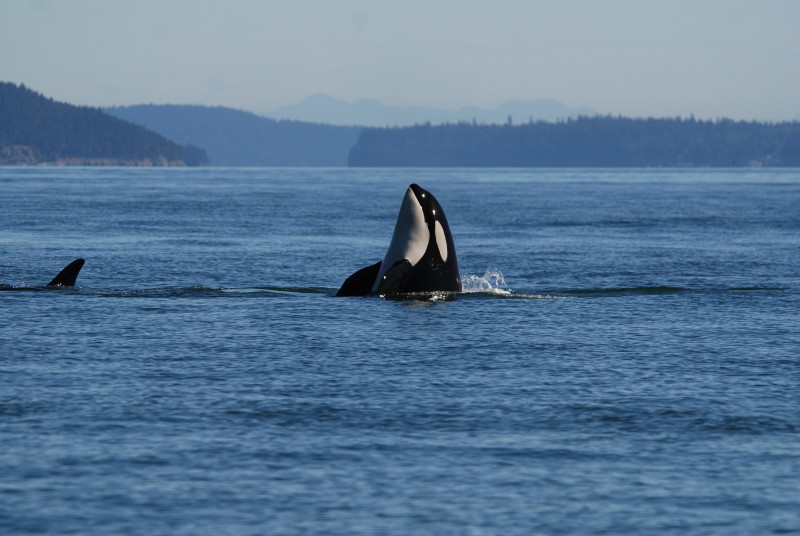Gorillas and Killer Whales: What’s the Connection?
By Gorilla Doctors Staff on Wednesday, March 30th, 2016 in Blog.
Photo by Joe Gaydos
By Dr. Kirsten Gilardi
Gorilla Doctors Co-Director
In the transboundary Salish Sea that stretches from Washington State in the United states into British Columbia in Canada, there are 84 killer whales that live in close proximity to almost 7 million people. Killer whales (Orcinus orca) range worldwide, but this particular population, called southern resident killer whales, is unique because each whale is known and recognizable based on the shape of its dorsal fin and a white “saddle patch” on its back.
Does that sound familiar?
It’s rare that you find populations of wild animals in which every individual is specifically accounted for the way they are with mountain gorillas and southern resident killer whales. Usually, we’re only likely to know every animal when the population is small and endangered (think California condors). Fortunately, these situations present us with a unique opportunity to closely monitor the health and well being of every individual in the population, which greatly facilitates their protection and conservation.
Gorilla Doctors works closely with its government and NGO partners to visually check habituated gorillas every day for signs of illness or injury, and this has been proven to be an important factor in the population growth of mountain gorillas. Now, a large group of highly dedicated and motivated killer whale researchers and managers are talking about establishing a similar system for southern resident killer whales.
Gorilla Doctors Co-Director Kirsten Gilardi was invited to a two-day workshop in Seattle, Washington held March 28-29, led in part by the Karen C. Drayer Wildlife Health Center’s Dr. Joe Gaydos. Kirsten shared detailed information on how mountain gorilla health is monitored, data are collected, and decisions are made about clinical interventions to aid ill or injured gorillas.
More than 25 people representing agencies and organizations in the US and Canada collectively discussed what indices may be used to describe the health status of endangered killer whales, how best to share this information in a centralized database, and started a conversation about if/when to conduct interventions to assist live stranded or injured wild killer whales.
Careful monitoring down to the individual level has had a great impact on the conservation of gorillas in central Africa, where about 880 mountain gorillas live in a park surrounded by millions of people and the various threats they carry. Killer whales live in a world similarly connected to humans – everything from pollution and toxins to loud noises created by vessel traffic can cause harm. An approach similar to Gorilla Doctors could have a great impact on the future of this other charismatic and intelligent species on the other side of the world.


 Donate
Donate